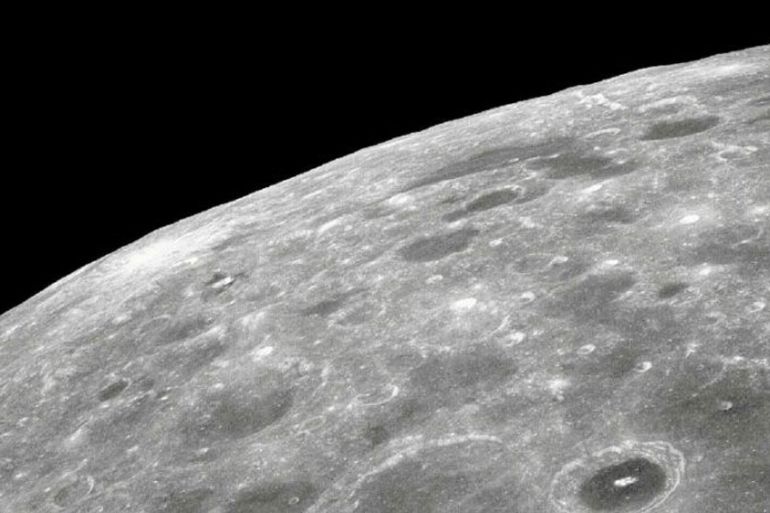China’s rover blasts off to make history on moon’s ‘dark side’
The Chang’e-4 lunar probe mission blasts off in a bid to become the world’s first to explore the far side of the moon.

China has launched a rover to the far side of the moon in an ambitious bid to become the world’s first to explore the lunar “dark side”.
The Chang’e-4 lunar probe mission blasted off on a Long March 3B rocket from Xichang Satellite Launch Center in southwest China in the pre-dawn hours on Saturday, according to the official Xinhua news agency.
Keep reading
list of 4 itemsHong Kong’s first monkey virus case – what do we know about the B virus?
Why will low birthrate in Europe trigger ‘Staggering social change’?
The Max Planck Society must end its unconditional support for Israel
The rover is expected to land around the New Year to carry out experiments and explore the untrodden terrain.
The probe is carrying six experiments from China and four from abroad. They include low-frequency radio astronomical studies – aiming to take advantage of the lack of interference on the far side – mineral tests, and experiments planting potato and other seeds, local Chinese media reported.
‘Dark side’
Unlike the near side of the moon that is “tidally locked” and always faces the earth, and offers many flat areas to touch down on, the far side is mountainous and rugged.
It was not until 1959 that the erstwhile Soviet Union captured the first images of the heavily cratered surface, uncloaking some of the mystery of the moon’s “dark side”.
No lander or rover has ever touched the surface there, positioning China as the first nation to explore the terrain.
The biggest challenge will be establishing communication with the far side of the moon, which is unreachable by direct signal and invisible from Earth, said professor Ouyang Ziyuan of the Chinese Academy of Sciences, the chief scientist of the China Lunar Exploration Plan.
“We will be like deaf and blind,” he said.
As a solution, China in May blasted the Queqiao (“Magpie Bridge”) satellite into the moon’s orbit, positioning it so that it can relay data and commands between the lander and earth.
China’s ambitions
Beijing is pouring billions into its military-run space programme, with hopes of having a crewed space station by 2022, and of eventually sending humans to the moon.
Chang’e-4 will be the second Chinese probe to land on the moon, following the Yutu (“Jade Rabbit”) rover mission in 2013.
#BREAKING: China launches Chang'e-4 lunar probe in the early hours of Saturday. It's expected to make first-ever soft landing on far side of the moon pic.twitter.com/r0Fwq2RM4U
— China Xinhua News (@XHNews) December 7, 2018
Once on the moon’s surface, the rover faces an array of extreme challenges.
During the lunar night – which lasts 14 earth days – temperatures drop as low as minus 173 degrees Celsius, while during the lunar day, also lasting 14 earth days, temperatures rocket as high as 127C.
Instruments must withstand those fluctuations and generate enough energy to sustain it during the long night.
Yutu conquered those challenges and, after initial setbacks, ultimately surveyed the moon’s surface for 31 months. Its success provided a major boost to China’s space programme.
Beijing is planning to send another lunar lander, Chang’e-5, next year to collect samples and bring them back to earth.
It is among a slew of ambitious Chinese targets, which include a reusable launcher by 2021, a super-powerful rocket capable of delivering payloads heavier than those NASA and private rocket firm SpaceX can handle, a moon base, a permanently crewed space station, and a Mars rover.